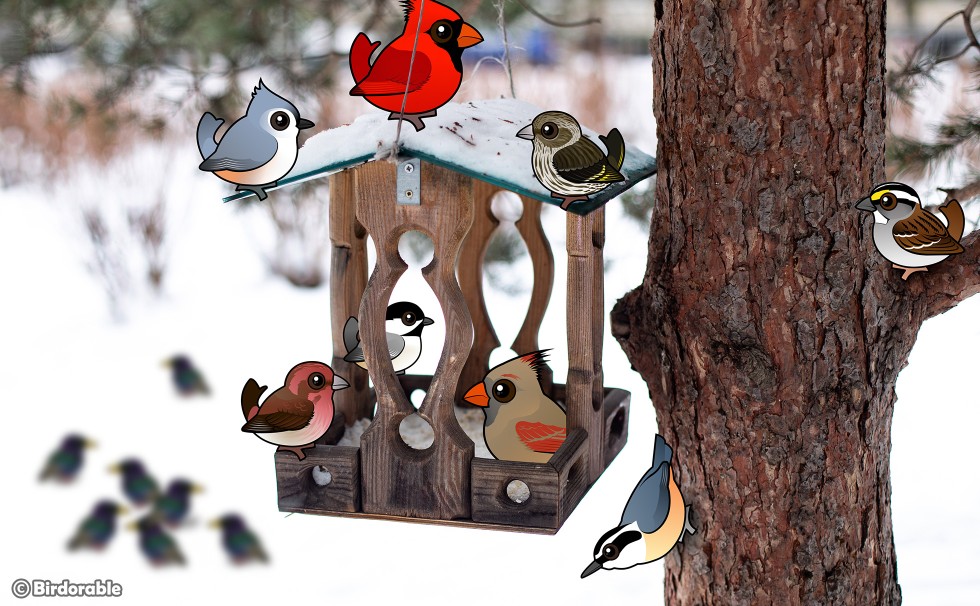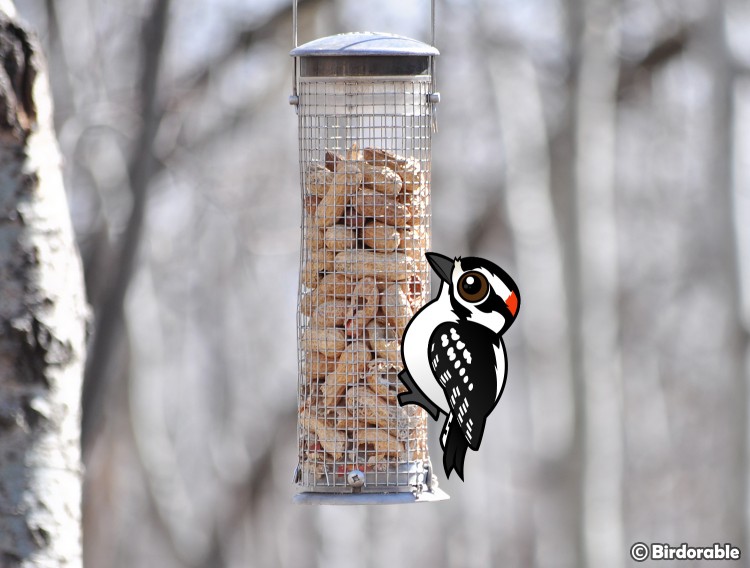Wings in Winter: How to Support Birds During National Bird-Feeding Month

Can you identify all these birds?
February marks a special occasion for bird lovers across the United States: National Bird-Feeding Month. This observance sprang to life in 1994 through the initiative of John Porter, an Illinois Congressman who recognized the pressing need to support our avian friends during the toughest stretch of the year. With the chill of winter in full swing and natural food sources dwindling, the importance of bird feeders becomes ever more pronounced, serving as essential lifelines for beloved backyard bird species.
Serving appropriate foods is crucial. Black oil sunflower seeds are known to attract a broad spectrum of birds, nyjer seeds are particularly favored by finches, and suet cakes cater to the dietary needs of woodpeckers, nuthatches, and others. By offering a diverse selection, you can enjoy the presence of a wide variety of birds right in your backyard.
But sustenance isn't the only necessity; water plays a vital role too. Birds need water not just for hydration but also for maintaining their plumage through bathing. A heated birdbath can be a lifesaver during those freezing February days, providing a constant source of water when natural supplies are locked under ice.
Creating a safe haven for these birds is equally important. Ensure that feeders are placed well out of reach of predators and provide ample cover for birds to seek refuge at a moment's notice. The safety measures extend to your household pets as well; keeping cats indoors during the winter and all year long can significantly reduce the risks to visiting birds. Additionally, consider applying decals to windows to prevent birds from colliding with the glass.
Engagement with the natural world and bird doesn't have to end with just feeding and watching. Participating in citizen science projects like the Great Backyard Bird Count, which takes place February 16 to 19 in 2024, not only enriches your bird-feeding experience but also contributes valuable data to bird conservation efforts. Citizen Science projects like this offer a unique way to connect with a community of like-minded individuals who share a passion for birds and their conservation.

Downy Woodpecker on a peanut feeder
Popular U.S. Backyard Birds and How to Attract Them
- Northern Cardinals
These vibrant red birds are a joy to behold. Attract Northern Cardinals with black oil sunflower seeds, safflower seeds, and cracked corn placed in hopper or platform feeders. - Blue Jays
Known for their intelligence and striking blue plumage, Blue Jays are drawn to peanuts, sunflower seeds, and suet. A sturdy tray feeder or a hopper feeder is best for them. - American Goldfinches
These small, bright yellow birds prefer nyjer (thistle) seeds or hulled sunflower seeds. Use a tube feeder with small perches to accommodate goldfinches. - Black-capped Chickadees
Friendly and curious, chickadees love sunflower seeds, peanut bits, and suet. Tube feeders or small hopper feeders work well for these tiny birds. - Hummingbirds
To attract hummingbirds, who migrate as early as February in some southern U.S. areas, use nectar feeders. A homemade sugar water solution (four parts water to one part white sugar, boiled and cooled) will bring these buzzing beauties to your garden. Never use mixes with artificial dye in your hummingbird feeders. - Bluebirds
Bluebirds are attracted to mealworms, suet, and fruit slices. Place these on platform or hanging feeders for best results. Depending on where you live, you might attract Eastern, Mountain, or Western Bluebirds.
By taking part in National Bird-Feeding Month, you can do more than just feed birds; you can help contribute to their survival during the winter months, ensuring the continuity of their populations.













Comments
Leave a comment
Thank you!